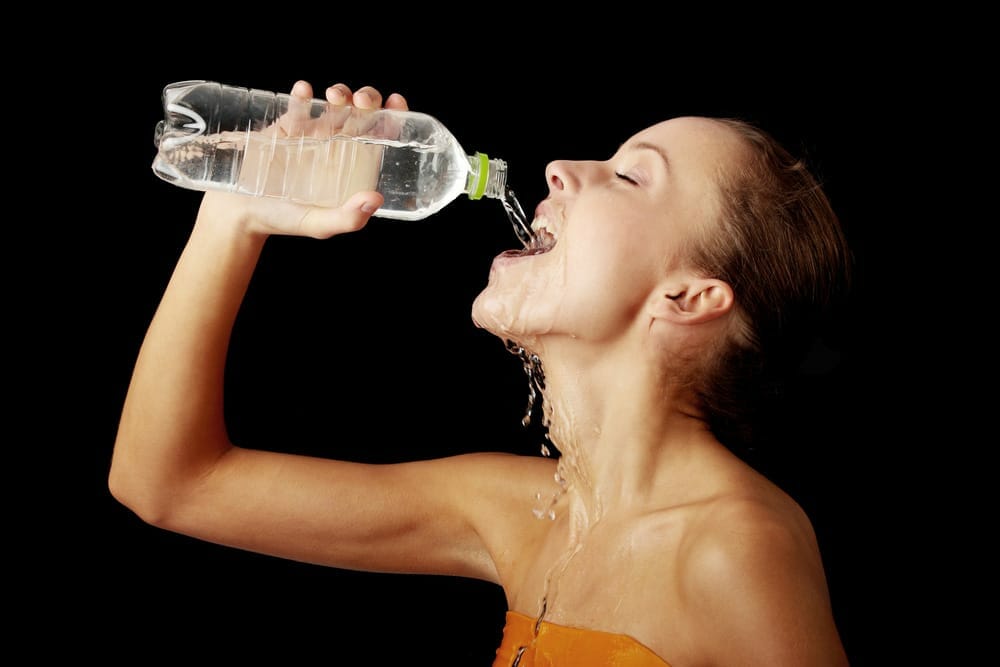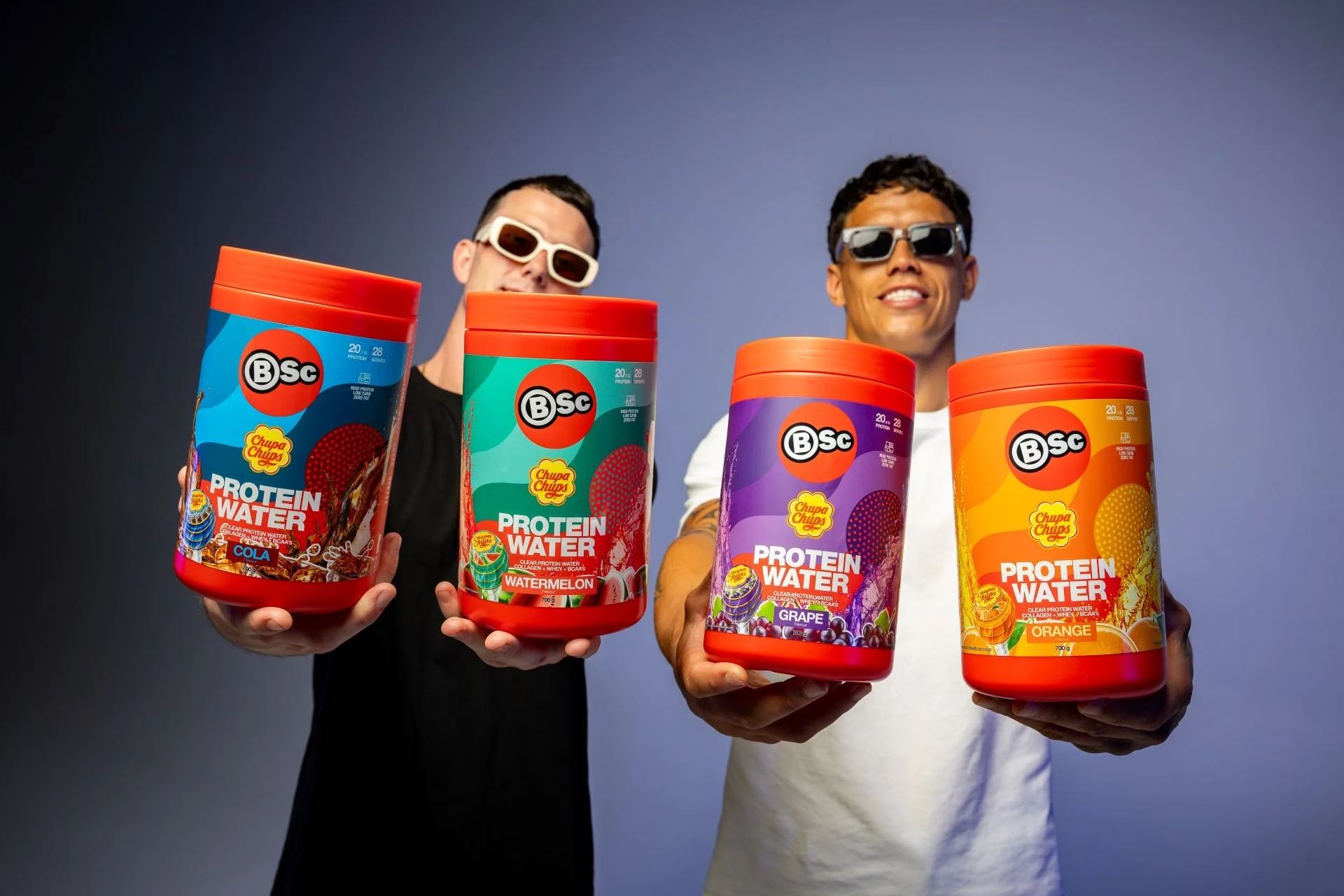It’s a highly effective supplement with lots of fitness benefits, yet it has attracted controversy over the years.
In the last few weeks of 1997, three unconnected US college wrestlers, all fit young men training for competition, died in unusual and strangely similar circumstances. Billy Saylor, 19, a student at Campbell University, North Carolina, died of cardiac arrest shortly after using an exercise bike on November 9. Two weeks later, on November 23, 22-year-old Joseph LaRosa, in his final year at the University of Wisconsin-La Crosse, died of heatstroke during a workout. And on December 9, Jeff Reese, aged 21, was found dead on the floor of a shower room at the University of Michigan following kidney and heart failure.

The deaths were linked by the media almost immediately, as journalists hunted for a common thread running through an unprecedented cluster of tragedies. A week after Reese’s death, the US Food and Drug Administration (FDA) provided the possible link, announcing an investigation into the part that the dietary supplement creatine, taken to increase power, may have played in the young men’s deaths.
It’s easy to see why the FDA looked to an external agent such as creatine. Healthy young athletes shouldn’t just die, especially not three at a time, and these were the first ever deaths to be registered in connection with collegiate sport in the US. Creatine use was still a relatively new phenomenon, which explains the mistrust filling the headlines and comments that followed. “Deaths raise suspicions: FDA begins scrutiny of creatine” read one article in USA Today, while student paper The Minnesota Daily described creatine as “The threatening unknown”. The University of Michigan’s assistant wrestling coach at the time, Marty Morgan, said what many seemed to be thinking. “When the FDA comes out with its study,” he predicted, “I’ll guarantee you there was some kind of supplement imbalance in [the wrestlers’] bodies.”
This was by no means the only time creatine has been mentioned in connection with health risks. In 1998, baseball player Derek Bell of the Houston Astros claimed that creatine use had seen him hospitalised with kidney malfunction on two occasions (“I guess I didn’t drink enough water with it” was his explanation). Then, in 2001, the French Agency of Medical Security for Food (AFSSA) published an article on its website stating that creatine represented “a potential carcinogenic risk” for supplemental users. And as recently as August 2010, an unusual cluster of serious muscle injuries – which saw 12 members of the McMinnville High School gridiron team in Oregon hospitalised – was linked to creatine on an ABC television news report.
Glossary – Creatine Monohydrate: The most common form of creatine supplement. Essentially, creatine with a molecule of water added.
Smoke without fire?
This amount of anecdotal testimony and suspicion raises the question: what clinical evidence is there to support the notion that creatine is potentially harmful? “None,” is the emphatic response of Dr Jeff Stout, associate professor at the University of Oklahoma’s health and exercise science department. “The only side effect that has been shown in clinical studies is weight gain. The other side effects reported by the media are fiction and not supported in the scientific literature.”
Dr Richard Kreider, head of the department of health and kinesiology at Texas A&M University, agrees. “I have been amazed at all the hyperbole and misinformation regarding creatine supplementation that has appeared in the popular media,” he says. “Often, this emanates from so-called ‘experts’ who are apparently not highly knowledgeable about the creatine literature, have never conducted any research on creatine (or in some cases no research at all) and/or have an apparent agenda against nutritional supplementation in general.”
The great majority of the scare stories can be pulled apart with a little research. AFSSA, for instance, made its pronouncement after misinterpreting existing clinical trial data. It simply read the results wrongly. And despite the concerns of ABC News, the report into the McMinnville gridiron incident by the Oregon Public Health Division identified an “intense, short-duration, repetitive burst of resistance exercise” along with “heat and unrecognised dehydration” as the cause of the injuries, specifically discounting creatine supplementation.
As for the three wrestlers, several studies indicate that creatine – far from causing dehydration or contributing to the dangers of high-temperature weight-loss workouts – might, in fact aid thermal regulation. But the most revealing detail is the almost entirely unreported fact that two of the wrestlers had never even taken creatine, and the third had stopped so long before his death that the effects had dissipated entirely.
Glossary – ATP:
Adenosine triphosphate (ATP) is the chemical used by animal cells as an energy carrier. It turns into adenosine diphosphate (ADP) when it loses a phosphate as part of the energy-conversion process.
Myths and legends
It’s clear that creatine is poorly understood by many people. Let’s attempt to correct that by starting at the very beginning. Creatine is a naturally occurring compound that plays a central role in delivering energy to the body’s muscles. You have it in your system now: it’s found in food, especially red meat and fish. Beef will give you around 2g per kilo, while a kilo of herring provides around 5g. It’s also produced by the body itself, mostly in the liver and kidneys, and then carried by the blood to the muscles.
Creatine’s job is to supply the chemical reaction that releases energy to the body. Think of creatine not as the battery that powers muscle movement, but the electricity that charges the battery. The battery itself is adenosine triphosphate (ATP), which provides immediate energy for short bursts of intense muscle activity. According to Kreider, this means “maximal effort exercise lasting up to six to eight seconds”, which would include sprints and resistance exercises such as push-ups and squats. ATP provides this energy by breaking the bond between two of its three phosphate molecules, which results in the creation of adenosine diphosphate (ADP). Creatine is able to convert ADP back into ATP so it can be used by the muscles again, in effect taking the used “batteries” and recharging them.
Supplementing your diet with creatine maximises the body’s supply of creatine phosphate for use in powering muscles. “The total creatine pool in the muscle averages about 120g for a 70kg individual,” says Kreider. “However, the body has the capacity to store up to 160g under certain conditions.” To use a slightly different metaphor, your muscles are like petrol tanks that are usually three-quarters full (less for vegetarians), and creatine supplements enable you to fill up completely.

Performance enhancer
Of course, none of this would really mean anything if that extra creatine just sat dormant in the muscles. So the crucial point is this: increasing the body’s store of creatine is clinically proven to benefit performance. “Creatine is one of the most researched supplements, with over 500 human clinical studies published,” says Stout. “Based on these studies, we’ve seen that elevating skeletal muscle creatine levels through supplementation increases sports performance, improves training adaptations, promotes muscle growth and, in some studies, reduces fat.”
Ultimately, this means using creatine could help you to lift heavier weights. One study looking at single-rep deadlifts had participants take 20g of creatine a day for 28 days or a placebo. At the end of the study period, those taking the supplement had increased their maximum lift by an average of 8.2kg, 2.9kg more than the placebo group.
Creatine may also speed up your recovery times. A similar test examining multiple sets of combined bench presses, squats and power cleans saw those taking the supplement enjoy a 41 percent increase in lifting volume above that of the control group.
Lastly, by enabling you to lift heavier weights for longer, creatine is also proven to increase lean muscle mass. In short-term studies (up to seven days) on a dose of 20-25g per day, average muscle mass increases range from 0.7kg to 1.6kg. In longer trials, these increases can be an average of 3kg greater than the control group.
Glossary – Micronised Creatine: Creatine ground into smaller particles – sometimes one-twentieth the size of the regular kind – which may speed absorption.
Scare stories
So if creatine has such a wide and solid base of peer-reviewed evidence behind it, why do we keep reading misinformed scare stories? Ben Jones, a trainer from Lifetime Health & Fitness, suggests that to the outsider, it can be difficult to distinguish creatine from less reputable bodybuilding aids.
“Often it’s not the people doing the training that have those concerns, but people that are outside the training community who don’t understand it,” he says.
“If your friends are going to the gym, hanging out with men who are unfeasibly large and buying things that make them look big, that might be a concern. To people not involved in sport and not aware of the differences between a food supplement and a drug, where is the distinction? Maybe it seems like a bit of a gateway drug. Once you’ve used this, are you going to get on to anabolic steroids?”
Free market
Another problem is with creatine itself – or rather with how it is marketed. Creatine first became popular as a supplement in the mid-1990s when a synthesised form began to be marketed widely at affordable prices. Outside of the cells in our bodies, creatine can’t exist as a stand-alone substance, and the synthetic form that became common then and still dominates the market today is creatine monohydrate: creatine combined with a molecule of water. Until a few years ago, Jones says, there were just a handful of processing plants in the world, usually promoting a uniform product with outlandish on-the-tub claims. It was an unattractive shop-front, at odds with the product’s genuine scientific credentials.
Now creatine production is more widespread, fitness websites and health food shops stock dozens of different brands, and the different types of creatine supplement – creatine phosphate, creatine citrate and so on – are ingested in different ways. The problem with this crowded marketplace is that the manufacturers’ claims can actually reinforce negative and unscientific statements about the supplement. For instance, a manufacturer of creatine phosphate might say that creatine monohydrate “can lead to bloating, cramping and dehydration”, describe it as “gritty” or suggest it leads to stomach discomfort – none of which is probably true.
On top of all that, there are genuine and expected limitations of creatine. For starters, creatine supplementation holds no benefits at all for certain people. “About 20 to 30 percent of the population don’t respond, mainly due to their diet,” says Stout. “For example, if your diet is high in fish, chicken and beef, then there’s a chance that creatine may not be helpful because there’s plenty of creatine in this type of diet anyway.”
Glossary – Glutamine: This amino acid is sometimes combined with creatine becaue there’s some evidence that it can counteract the effects of overtraining.
Who benefits?
Creatine’s effects are not necessarily desirable for everyone, either. It has less of an impact for endurance athletes, while sprinters and others for whom speed is a key consideration – such as those who play rugby or soccer – should be careful not to bulk up too much.
More than anything, Jones is keen to stress that, although it might be “the standout supplement of the last 15 or so years”, creatine is not a “wonder supplement that will do everything for you”. Unless your training program is carefully designed and very disciplined, you’re unlikely to replicate the kind of benefits recorded in closely monitored clinical trials. More generally, creatine needs to be part of a wider approach to health and fitness.
“The critical word is ‘supplement’,” Jones says. “It’s an adjunct to your diet – it’s not there to make up for deficits.
People see supplements as a silver bullet that will compensate for a poor diet. Nothing is going to do that for you. And if you’re not training and following a progressive resistance program or a program for your sport, you won’t get results no matter what you take or what you do nutritionally.”
For all these caveats, though, the bottom line is that creatine works. It increases the energy supply to the muscles, and allows longer and more intense workouts that build greater fitness and muscle mass.
And there’s no evidence whatsoever that it comes with any serious side effects – even anecdotally reported minor effects such as cramps and gastrointestinal discomfort are absent from clinical trial data.
Glossary – CEE: Creatine ethyl ester. This form of the supplement contains ethyl ester, a fat-soluble salt which some research suggests increases its speed of uptake into the body.
Weight drop
In the end, Michigan coach Marty Morgan’s guarantee proved hollow. The FDA announced in May 1998 that creatine had not contributed to the deaths of the three young wrestlers. As more information became available, the tragedy appeared less mysterious than it first seemed.
All three athletes had been engaged in drastic short-term weight loss in order to make competitive weight classes. All three had worn rubber suits – LaRosa’s under two additional sweat suits – and denied themselves water during workouts performed in temperatures of up to 33˚C. Saylor was attempting to lose three kilos in a single day, and LaRosa two, while Reese, the only wrestler available for the 68kg class when a team regular picked up an injury, was given four days to lose 9kg. The attempt sent him into what the chief medical officer described as “metabolic derangement” and killed him.
It’s a shame the facts have taken so long to catch up, as recent work with creatine has looked into its potential as more than just a muscle-building tool. “After the incredible success of creatine as a sports supplement, many scientists turned their attention to its role in potentially improving the lives of those with disease,” Stout says. “One very promising area of treatment may be in the elderly and in those with neuromuscular diseases. Creatine has shown signs of having neuroprotective effects, meaning it might have the capacity to protect or improve vital brain functions in those with diseases such as Parkinson’s, Alzheimer’s, amyotrophic lateral sclerosis [a form of motor neurone disease], multiple sclerosis and strokes.”
Kreider points out that these neuroprotective qualities may extend to sporting head injuries, highlighting recent studies “showing that kids with traumatic brain injury have better outcomes and survival rates when put on a course of creatine than kids who don’t get creatine. Same with concussions. In contact sports such as [gridiron] football, it makes sense that they should be taking creatine.”
There’s still a lot of work to be done and a great deal about creatine for scientists to understand, but the potential is massive. As Stout says, “This is just the beginning.”
Glossary – Creatine citrate: The most water-soluble type of creatine supplement. Typically more expensive than creatine monohydrate.
Creatine FAQ
Do I need to take creatine?
If you weight-train or do a sport that involves repeated power movements, such as sprints or throws, you’re likely to see benefits from taking creatine because it’s ideal for short periods of all-out effort with brief phases of recovery.
How much should I take?
You probably already get around 1g a day from food – more if you eat a lot of beef or fish – and produce another 1g from amino acids. “This will leave your stores about 40 percent below their maximum,” says Nikhil Rao of the University of Virginia.
“The best way to fill up seems to be with doses of around 3g.”
When should I take it?
After a workout is the ideal time to take creatine. Some manufacturers recommend taking creatine before a workout, but if you do, make sure you drink plenty of water – it’s hygroscopic, which means it can draw water into your bloodstream from surrounding tissues or muscles.
Should I take pills or powder?
It’s up to you. Pills are more convenient and don’t need measuring out, while powders tend to be a bit cheaper. Crucially, though, there are no reputable studies indicating that one form or the other is more easily absorbed or effective, so it’s really down to preference.
Do I need to worry about side effects?
No clinical study has ever connected any side effects to creatine, although you can err on the side of caution by making sure you drink the recommended amount of water (around 500ml) with your dose.




